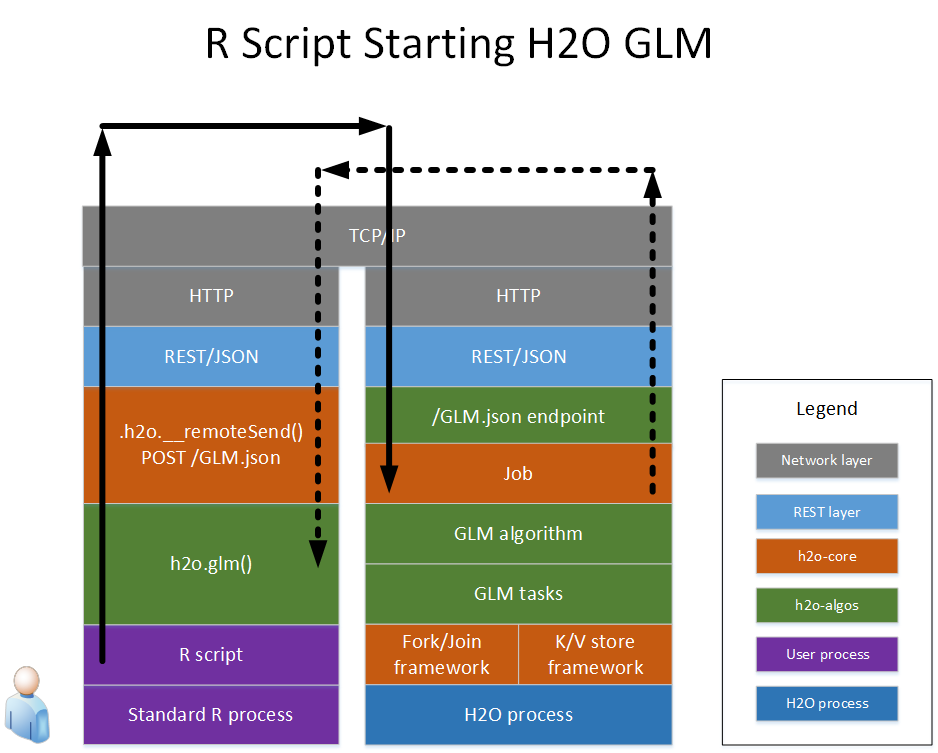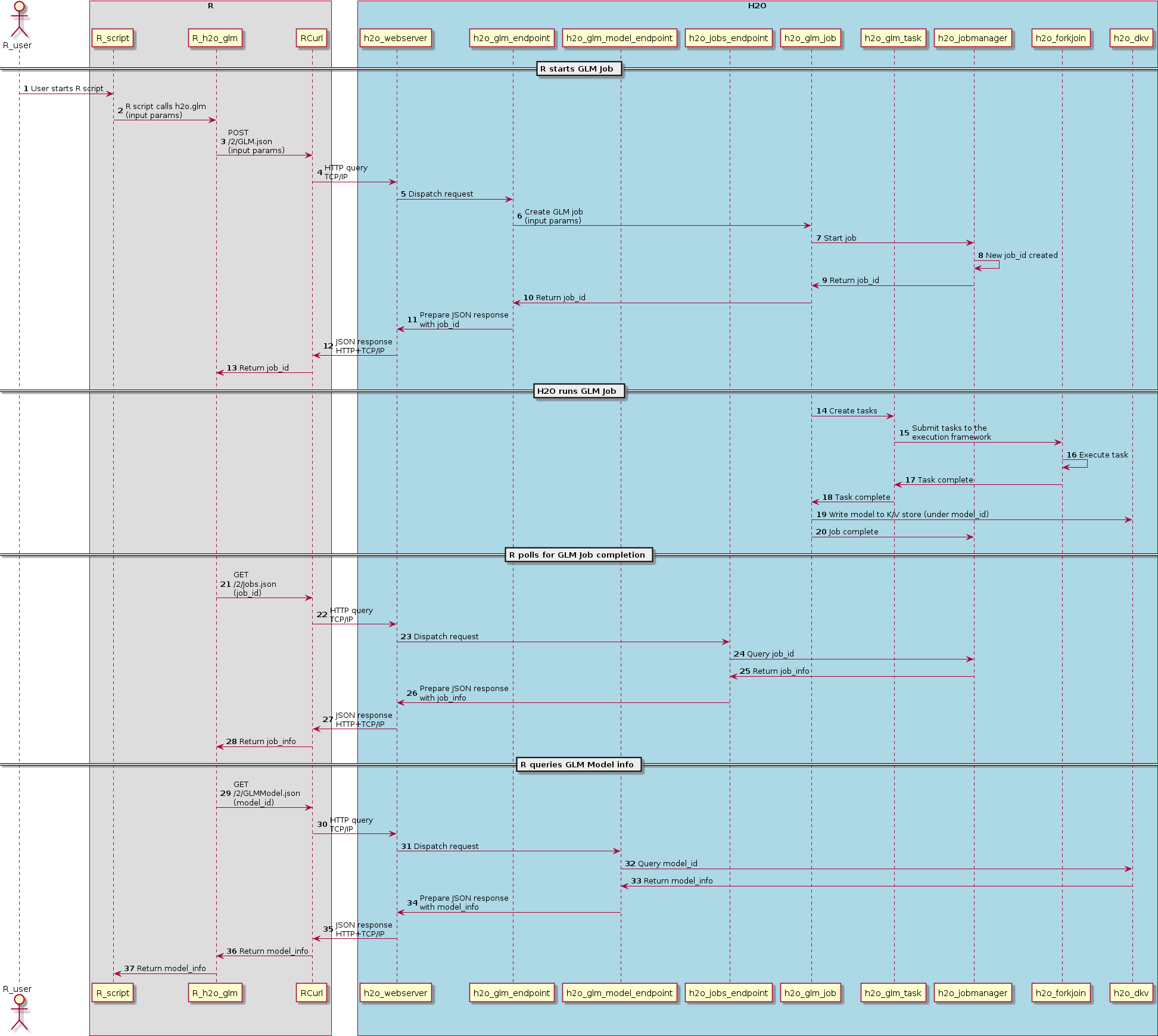How R Scripts Call H2O GLM¶
The following diagram shows the different software layers involved when a user runs an R program that starts a GLM on H2O.
The left side shows the steps that run the the R process, and the right side shows the steps that run in the H2O cloud. The top layer is the TCP/IP network code that actually lets the two processes communicate with each other.
The solid line shows an R->H2O request, and the dashed line shows the response for that request.
In the R program, the different components are the R script itself, the H2O R package, dependent packages (RCurl, rjson), and the R core runtime itself.

The following diagram shows the R program retrieving the resulting GLM model. (Not shown is the GLM model itself executing subtasks within H2O and depositing the result into the K/V store. Also not shown is R polling the /Jobs.json URL for the GLM model to complete.)

An end-to-end sequence diagram of the same transaction is below (click on the diagram to zoom). This gives a different perspective of the R and H2O interactions for the same GLM request and the resulting model.

How R Expressions are Sent to H2O for Evaluation¶
An H2O data frame is represented in R by an S4 object of class H2OParsedData. The S4 object has a @key slot which is a reference to the big data object inside H2O.
The H2O R package overloads generic operations like ‘summary’ and ‘+’ with this new H2OParsedData class. The R core parser makes callbacks into the H2O R package, and these operations then get shipped over an HTTP connection to the H2O cloud.
The H2O cloud performs the big data operation (say ‘+’ on two columns of a dataset imported into H2O) and returns a reference to the result. This reference is stored in a new H2OParsedData S4 object inside the R program.